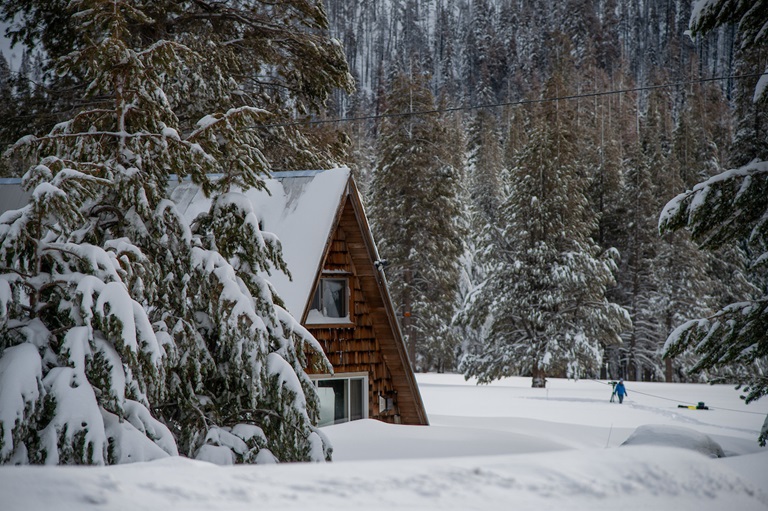Yes, We Love the Rain and Snow, but California Needs Much More
A cabin in the Sierra Nevada near Phillips Station, Calif., where the first snow survey of the season took place December 30, 2021. DWR photo.
Most Californians have been experiencing a very wet holiday season. December storms have brought significant rain and record-breaking snow, sending water into our parched state reservoirs and adding to our Sierra Nevada snowpack, which is running well above average for this time in the season.
The winter storms are providing our drought-stricken state with a glimmer of hope, but more storms packing a similar one-two punch of rain and snow will be needed through the winter season before we can be in a place where drought conditions are no longer of concern.
California has the most variable weather conditions in the nation, and in the 21st Century we have seen climate change make our state’s extremes even more extreme. California continues to see evidence of this with bigger swings between wet and dry years and even extreme variability within a season. A wet start to the year doesn’t mean this year will end up above average once it’s all said and done.
The 2020-2021 water years combined have ranked as the two driest years in California’s statewide precipitation record, surpassing 1976-77. In fact, more than half of California’s Water Years since 2000 have been dry or drought years, contributing to less water in the system and creating increased risk for impacts such as devastating wildfire seasons.
The variability in our state’s weather also could mean that the wet start to this water year could take a turn back down “Dry Street” as forecasts show the potential for dry weather in the new year. In December of 2012, for example, California saw above average rainfall and snow. The rest of the water year ended up bone dry, resulting in the first year of a declared drought that lasted until 2017.
While we are off to great start to the 2022 Water Year, these are only a few early storms and we still have the reminder of our wettest months historically ahead of us. It is crucial that we get rain and snow during those months to truly ease drought impacts.
So, you might be asking, how much water do we need this year before drought conditions ease? The answer depends on many factors, including where one lives, how much water evaporates during the spring runoff, snow water equivalent of the Sierra snowpack, groundwater levels, and more. It is still too early in the season to know for sure how it will all shake out.
The record-breaking snowfall in the Sierra and rain across California is certainly encouraging, but our state’s water future remains uncertain due to precipitation variability and a changing climate. We encourage Californians to work together to use water wisely and save for our future.
DWR will continue to coordinate with other partner agencies who are committed to providing ongoing support to California’s communities and responding to this record-setting drought.
For the most up-to-date information on California’s current conditions, please visit https://water.ca.gov/Current-Conditions.
